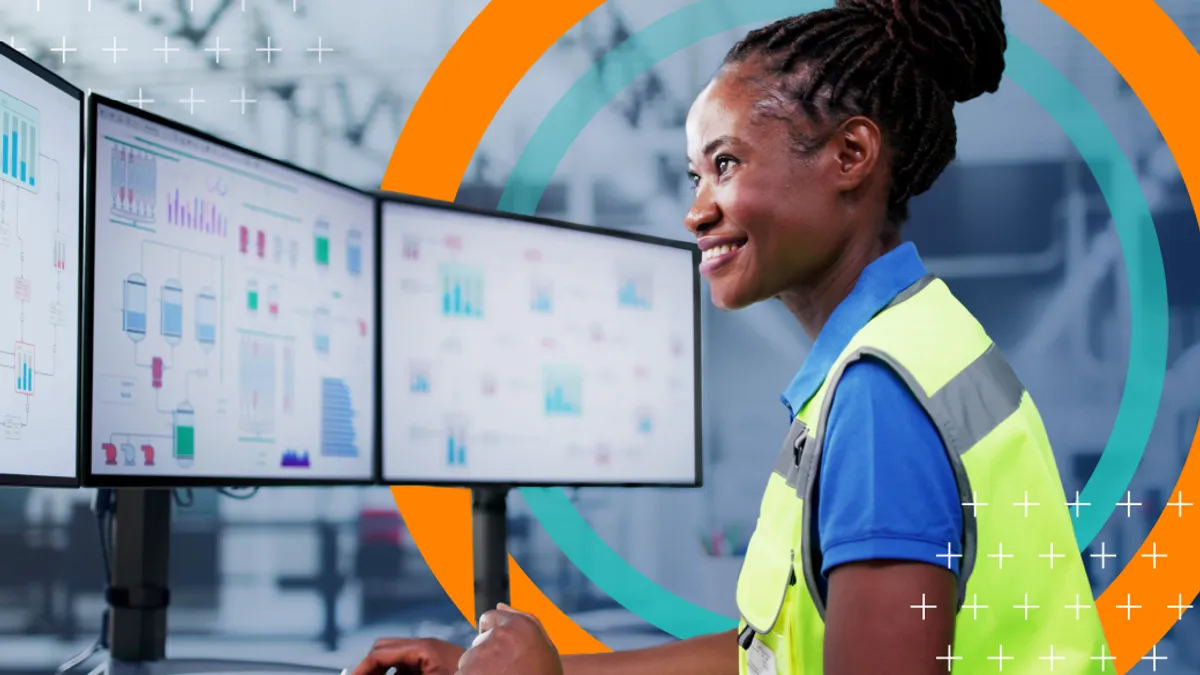Data is the lifeblood that moves global commerce and the modern supply chain. In that context, four trends are coming into focus as we look ahead to 2025. From regulations calling for traceability and transparency to ever-escalating concerns about the environment, businesses have a lot on their plates. Add to this the transformative potential of real-time data and artificial intelligence. The clear theme? The ability to harness the power of data effectively in the supply chain will continue to define how businesses operate and compete.
The push for traceability and transparency
Regulations continue to demand increased ability to trace goods through the supply chain. Although the deadline for full implementation of the electronic tracing of prescription drugs as required by the Drug Supply Chain Security Act (DSCSA) is upon us, other industries are in the early stages. For example, many companies in the food industry are just getting started. Manufacturers, processors and suppliers are facing a critical deadline of January 20, 2026, for meeting requirements as outlined in the FDA Food Traceability Final Rule of the Food Safety Modernization Act (FSMA Rule 204). Similarly, new regulations in Europe regarding Digital Product Passports (DPP), tools for digitally collecting and sharing data across a product’s lifecycle, are likely to impact global trade as well.
The good news is that companies who got started early on their traceability initiatives found significant benefits beyond merely meeting the requirements of the regulation. With greater ability to trace goods through their supply chains, companies like IPC/Subway, as well as Golden State Foods and McDonald’s, were able to improve inventory management.
Increasing focus on sustainability
No one should be surprised by the inclusion of sustainability on this list, as it continues to move up the ladder of companies’ priorities. As consumer concerns over environmental issues grow, businesses that can demonstrate a commitment to sustainability can win hearts, minds, and business. The continued push stems from both regulatory pressures and consumer demand for more eco-friendly products and practices. As a result, companies are increasingly adopting sustainable and circular practices.
With headlines of lawsuits about greenwashing and false advertising, companies should be thinking about how they will substantiate their claims. Identifying products and locations and seamlessly sharing data about the what, where, why, and how of a product’s journey through the supply chain makes it possible to account for the product’s overall impact. For example, the ability to trace a product back to its point of origin can allow companies like Culinary Collaborations and traceability solution providers like Wholechain to back up claims that products are sustainable and ethically sourced.
Finding strategies to make supply chains more resilient
Supply chain disruptions have become our new normal. From geopolitical turmoil to climate change-related drought or flooding to ongoing labor shortages, companies are looking for ways to make sure they can handle the next one when it comes. So businesses are increasingly turning to strategies like near-shoring, modular supply chains, hyper-local logistics, and diversified sourcing.
All these strategies depend on knowing exactly where everything is in their supply chains. However, manual processes and inconsistent data structures can hinder end-to-end supply chain visibility, making it extremely challenging to share data across a global network of suppliers, manufacturers, logistics providers, and retailers. Existing technology, like RFID and 2D barcodes (including QR codes), enables digitization and automation for better visibility. RFID tags allow stakeholders to track items efficiently and accurately. 2D barcodes store extensive data, such as batch numbers and URLs, helping retailers manage inventory and freshness, while providing consumers with detailed product information.
Real-time data, automation, and AI
With an explosion of data from supply chains with end-to-end visibility, a whole new world of challenges and opportunity awaits. The integration of real-time data, automation, and artificial intelligence (AI) can enable more dynamic and responsive operations. Real-time data provides immediate insights, allowing for proactive decision-making, such as rerouting shipments to avoid delays and optimizing inventory levels. Automation streamlines processes by handling repetitive tasks with greater speed and accuracy, while AI enables predictive analytics and advanced decision-making, leading to more accurate demand forecasting and better risk management.
However, these technologies’ effectiveness hinges on quality data. Without reliable, accurate data, even the most advanced systems can falter, leading to inefficiencies and missed opportunities. Ensuring data integrity and consistency is crucial for harnessing the full potential of real-time data, automation, and AI. This means investing in robust data management practices and technologies to clean, validate, and maintain data quality. Using reliable registries to verify data can prove invaluable to setting up the foundation for success.
In 2025 and beyond, the ability to effectively harness data will be the cornerstone of successful supply chains. Companies that prioritize traceability, sustainability, resilience, and the integration of real-time data, automation, and AI will not only navigate the complexities of global commerce but also gain a competitive edge. By investing in robust data management practices and embracing innovative technologies, businesses can ensure they are well-equipped to meet regulatory demands, satisfy consumer expectations, and thrive in an increasingly data-driven world.










